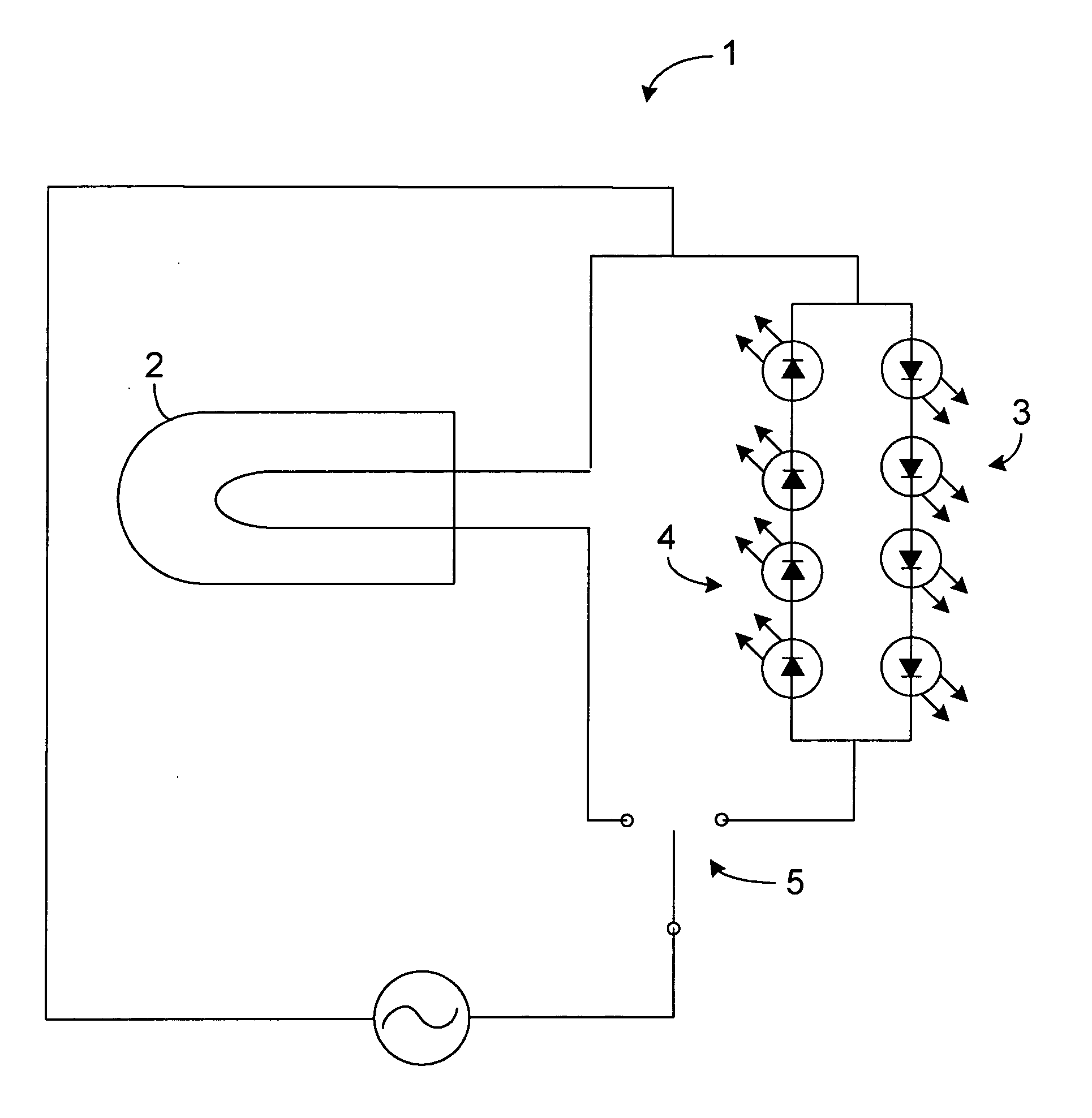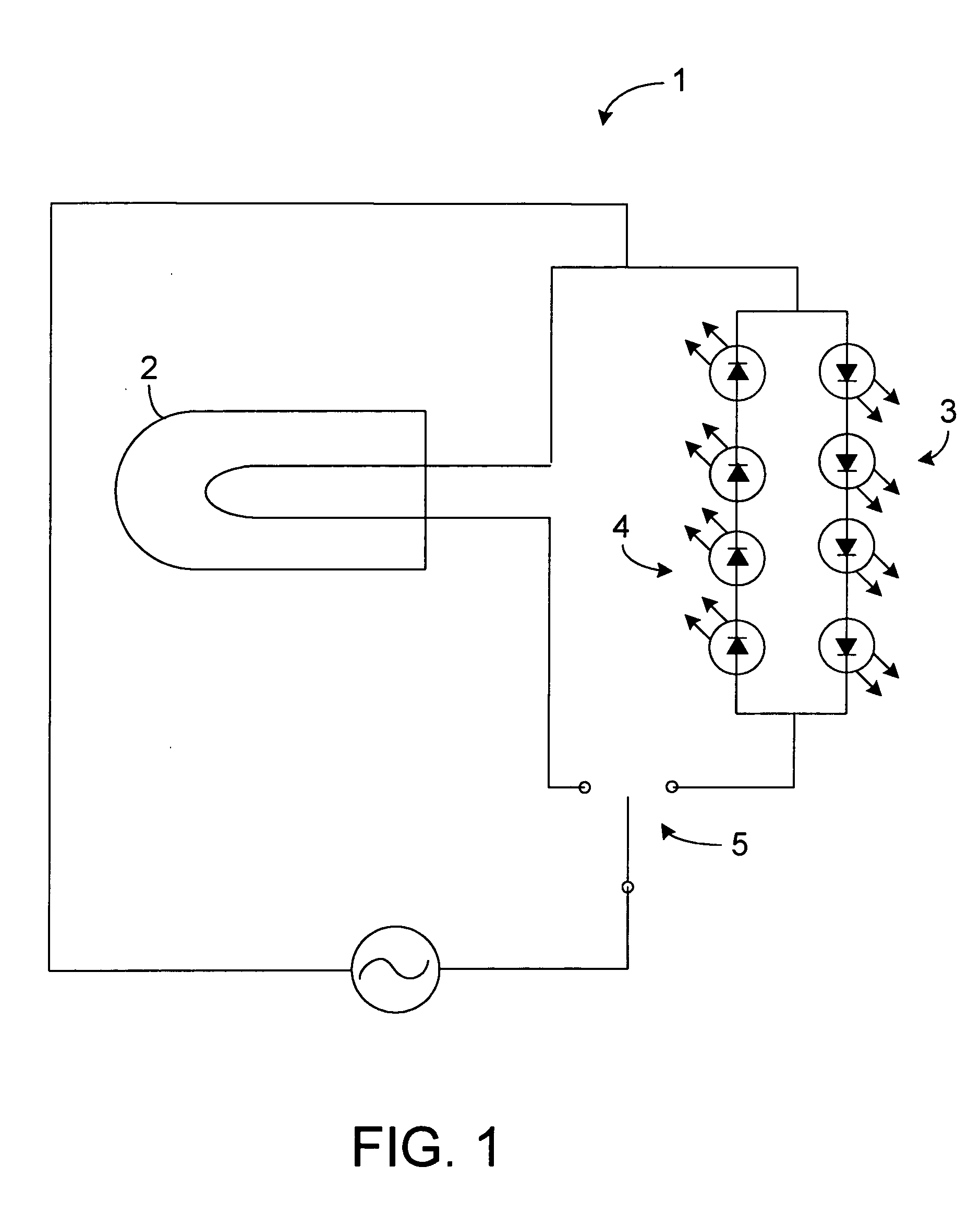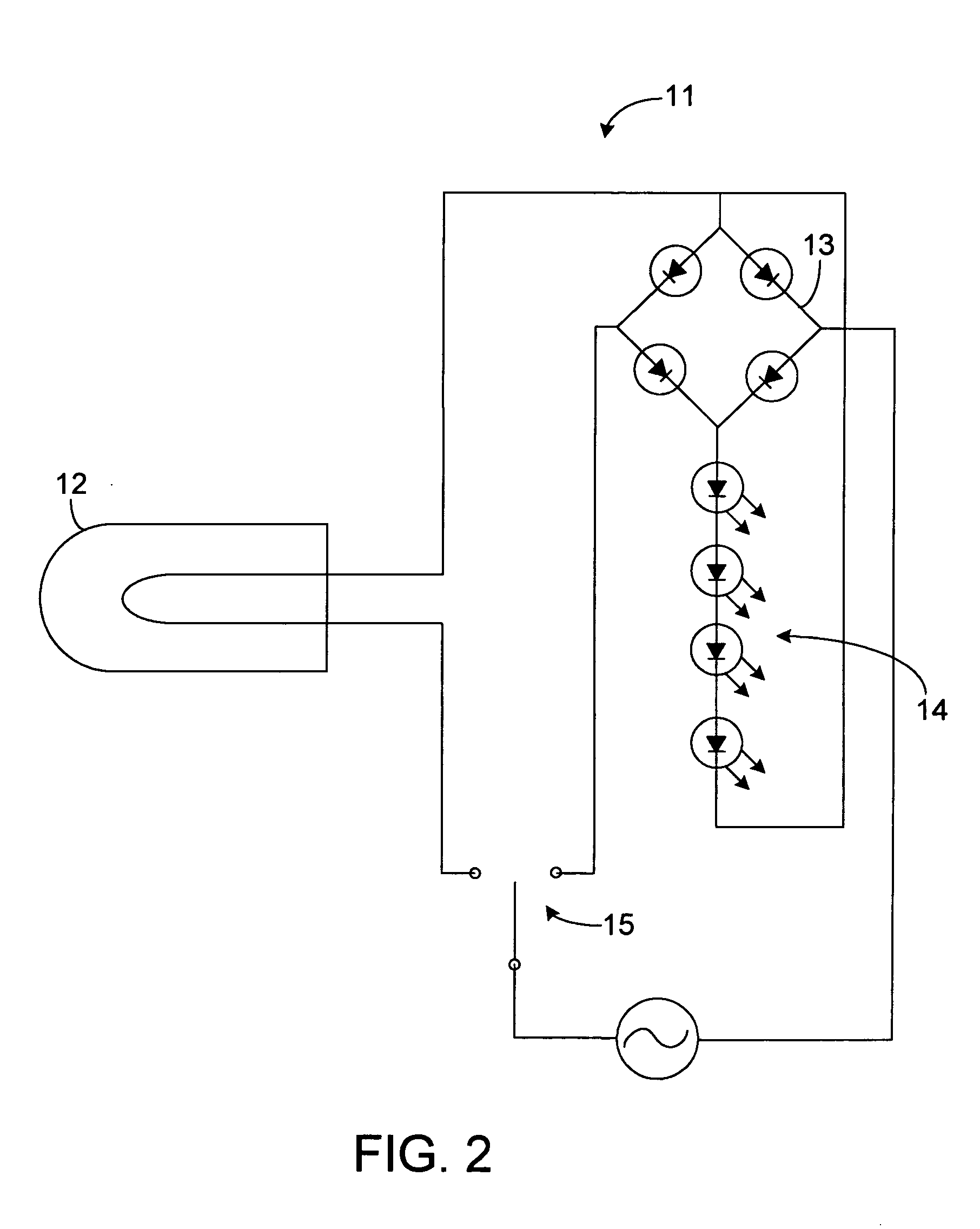Landscape lighting
a technology for landscape lighting and lighting fixtures, applied in lighting and heating equipment, light source combinations, instruments, etc., can solve problems such as unappealing color, a potential hazard for pedestrians negotiating dark walkways, and hatchlings crawling toward lights instead of the beach
- Summary
- Abstract
- Description
- Claims
- Application Information
AI Technical Summary
Benefits of technology
Problems solved by technology
Method used
Image
Examples
Embodiment Construction
[0012] The present disclosure provides resorts, public parks as well as homeowners with an aesthetically pleasing landscape light that is ecologically compatible and that will not interfere with the normal nest and hatching behavior of sea turtles.
[0013] The present invention provides lighting fixtures that may be switched from white light to a monochromatic light that is not visible to a selected animal species. The white light can be from any source, including incandescent, fluorescent and LED. If the white source is one or more LED's, simple switching between white and monochromatic LED's is all that is required. Otherwise differences on operating voltages must be taken into account, as will be explained utilizing incandescent lighting as the source of white light. Incandescent landscape lights may be designed to operate at voltages between 12 and 18 volts. Although the red LEDs that are most compatible for use in turtle nesting areas operate at approximately 2 volts, operating ...
PUM
 Login to View More
Login to View More Abstract
Description
Claims
Application Information
 Login to View More
Login to View More - R&D
- Intellectual Property
- Life Sciences
- Materials
- Tech Scout
- Unparalleled Data Quality
- Higher Quality Content
- 60% Fewer Hallucinations
Browse by: Latest US Patents, China's latest patents, Technical Efficacy Thesaurus, Application Domain, Technology Topic, Popular Technical Reports.
© 2025 PatSnap. All rights reserved.Legal|Privacy policy|Modern Slavery Act Transparency Statement|Sitemap|About US| Contact US: help@patsnap.com



